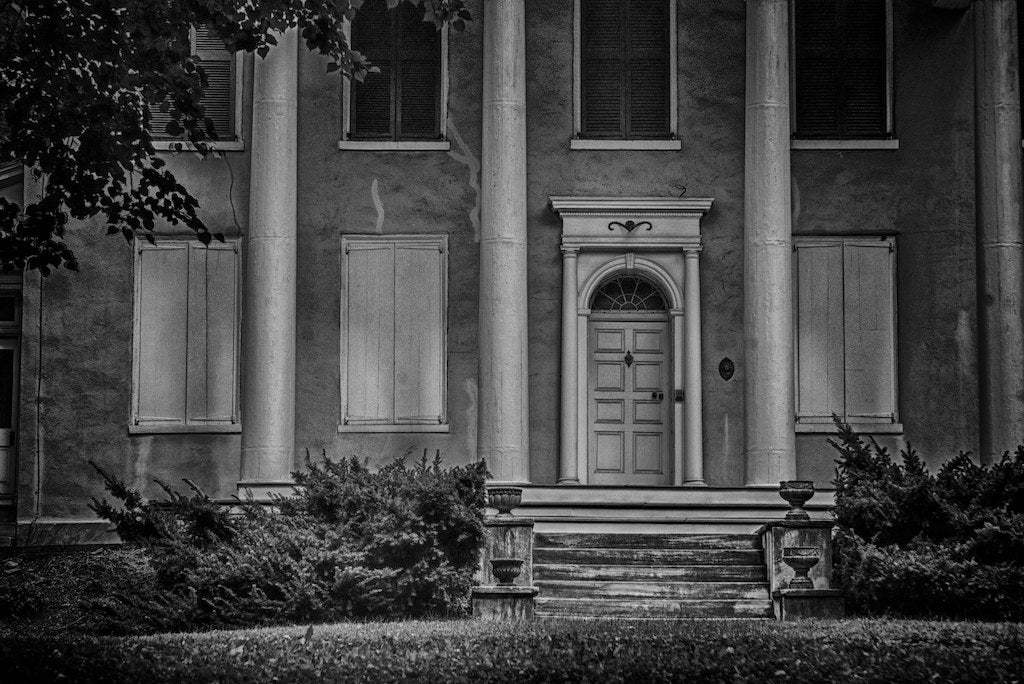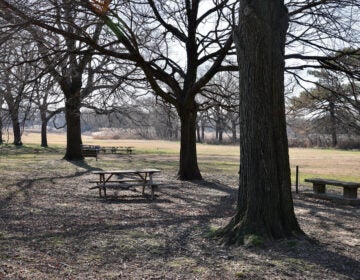Educational reuse being considered for Germantown’s vacant Loudoun Mansion

Loudoun Mansion haunts Germantown Avenue, and not just because it’s popularly believed to be riddled with specters. A lightning bolt struck the city-owned mansion in 1993, setting it ablaze, and ending its 25-year career as a house museum. Since then it has sat empty, its historic collection of art and furniture unavailable to the public. A small trust aided in its maintenance, but provided far too little to restore the badly damaged interior.
In the mid-2000s the Parks and Recreation department officially deaccessioned the museum’s holdings, with support from the Pew Charitable Trusts. Under the arrangement, prominent city institutions like the Philadelphia Museum of Art and nearby Stenton Mansion would receive key pieces from the house. (An email to Parks and Rec wasn’t returned by press time.) But legal complications kept the artifacts behind Loudon’s closed doors, while the property remained in limbo.
This year Loudoun’s period of stasis came to an end. In June, the case finally came before the Orphan’s Court to see about deaccessioning the extensive historic collection. Judge Matthew D. Carrafiello approved the process. Now there’s a potential tenant interested in a long-term lease on the building, and one that’s willing to pay for upkeep and maintenance after more than 20 years of vacancy.
The prospective occupant is Natural Creativity, a non-profit for homeschooled children, which wants to renovate the building to serve as an expanded base for its operations in Germantown. The proposal is being actively considered by the Fairmount Park Conservancy, which would need to approve the proposal, as would the Department of Parks and Recreation, Historical Commission, and Art Commission. It is estimated that at least half a million is needed to restore Loudoun to a useable state.
“There’s no pot of money,” said Lucy Strackhouse of the Fairmount Park Conservancy, at a late September community meeting about Natural Creativity’s plans for the house. “If an angel funder came to me tomorrow and offered $500,000 to endow this property as a house museum, we would definitely talk about that. But that’s not going to happen.”
But some community representatives at the meeting lamented that the fate of Loudoun hadn’t been put up for discussion before Natural Creativity expressed an interest in it. They wanted to talk about the deaccessioning and the permanent loss of Loudoun as a house museum.
“Why didn’t we have this conversation before there was someone who wanted to lease the property,” asked Alison Weiss, of the SoLo/Germantown Civic Association community group. “There is a trust that yields $30,000. That’s a start. Most house museums don’t have endowments, so you are taking one that does.”
The 14-room mansion sits on more than seven-acres, just to the north of Wayne Junction. It is a vestige of Germantown’s storied past, when the wealthy staked their claim to this expanse of greenery far from the heat and noise of Philadelphia. Loudoun Mansion is actually a relatively new addition to the stately homes of the neighborhood, built between 1796 with 1801, with significant additions—including two story columns and distinctive pink stucco–added in 1830.
Ghost stories have circulated about Loudoun for decades, if not centuries. The Federal-style house was allegedly constructed on a burial ground for the unquiet dead of the Revolutionary War. But most of the spirit-sightings are related to the Armat family who inhabited the wooded grounds for five generations. Spectral residents of note include William Armat Logan, who died in 1860, and his faithful dog (death date unknown), and who pad around the mansion and perform harmless pranks. Another small girl of mysterious identity is said to run through the house’s hallways too, while the man responsible for the 1830’s touchup forever inspects the grounds and his own good works.
Philadelphia’s development caught up with the Armat family’s estate eventually, surrounding their grounds with rail routes and row houses. When Maria Dickinson Logan willed Loudoun Mansion to Fairmount Park, Germantown’s character had been transformed by urbanism and middle class prosperity. More changes were soon to come.
When Logan died in 1939, the neighborhood’s demographics were still vast majority white: the census tract containing Loudoun would remain over 99 percent white through 1960. (As the last of the house’s residents, she is now said to be another of the mansion’s ghostly inhabitants.)
A few years after Loudoun opened as a house museum in 1967, the census tract was increasingly racially mixed, with a couple hundred fewer people, and a poverty rate of 12.3 percent. As of the 2010 census, the population is 95.5 percent black, with a poverty rate of 31.7 percent, and 3,000 fewer people than in 1960.
Loudoun enjoys a prominent place in local lore, partly due to its incongruity in an increasingly working-class black neighborhood. It earned a pride place in Germantown native Mat Johnson’s 2015 book Loving Day, in which the protagonist returns to Philadelphia and inherits the dilapidated manor.
“In the ghetto there is a mansion, and it is my father’s house,” the novel’s opening reads. “It sits on seven acres, surrounded by growling row homes, frozen in an architectural class war. Its expansive lawn is utterly useless, wild like it smokes its own grass and dreams of being a jungle.”
In real life, the estate itself is well kept courtesy of David Wright, the live-in caretaker whose tenure stretches back to the mid-1990s. Loudoun itself it unoccupied, protected by a stark black metal fence, its Pepto-Bismol-pink stucco stark against the verdant surroundings. (Wright lives in a small cottage next to the main house.) On the inside, the mansion needs serious attention.
“The house is a wreck,” says Peter Bergson, co-founder of Natural Creativity, at the late September meeting. “It’s in disastrous shape in terms of the work that needs to be done for anyone to use it for any purpose. $500,000, if not more, to allow anyone to come into the building.”
Bergson went on to describe Natural Creativity’s free-spirited educational model. The program is open to students of any age who would otherwise be eligible for what he calls “compulsory schooling.” Natural Creativity offers home school parents a social justice oriented vision meant to foster imagination and collaboration. In Bergson’s telling, this is the opposite of the values celebrated by the larger society. In keeping with that mission, he also promised that if Natural Creativity were allowed to lease the property, they would keep the grounds open to the public.
That would be an improvement. The estate outside the fence is available to everyone today, but according to Germantown United CCD’s Emaleigh Doley that fact isn’t widely known in the community.
Doley grew up and still lives nearby. She rarely sees people playing in the park. (On Twitter, Mat Johnson told PlanPhilly that his friends never played on the grounds when he was a kid because they believed the mansion to be haunted.)
“It’s exciting that there’s interest in reactivating the building, but as a near neighbor I hope to see the park itself get some light improvements,” says Doley. “It’s a passive park, but it does need basic signage and basic information letting people know it is a public park and not the private property of this big mansion. When I was a kid we would play there, but the kids on my block now aren’t going.”
The approach to Loudoun Mansion from the south, towards Wayne Junction, is dominated by a forlorn gas station. To see the house itself you have to scale a ragged line of concrete steps, studded with empty tallboys of Steel Reserve and other detritus. Then the fenced in, colonnaded house comes into view. It’s easy to see why neighborhood kids might avoid the place. Loudoun looks forbidding, lifeless, and locked up.
If Natural Creativity does decide they want Loudoun, they’ll then face about a year of permitting by Strackhouse’s estimation. So it’ll probably be empty until at least 2018.
“Natural Creativity is discussing the costs of restoring the mansion, and I’m expecting them to contact me before Thanksgiving if they are interested in formally applying to be the tenant,” says Strackhouse. “We’ve had others approach us, but none that were interested after they learned half a million would be needed to restore the building. It takes a special organization that has a passion for the building to tackle a project like this.”
WHYY is your source for fact-based, in-depth journalism and information. As a nonprofit organization, we rely on financial support from readers like you. Please give today.






